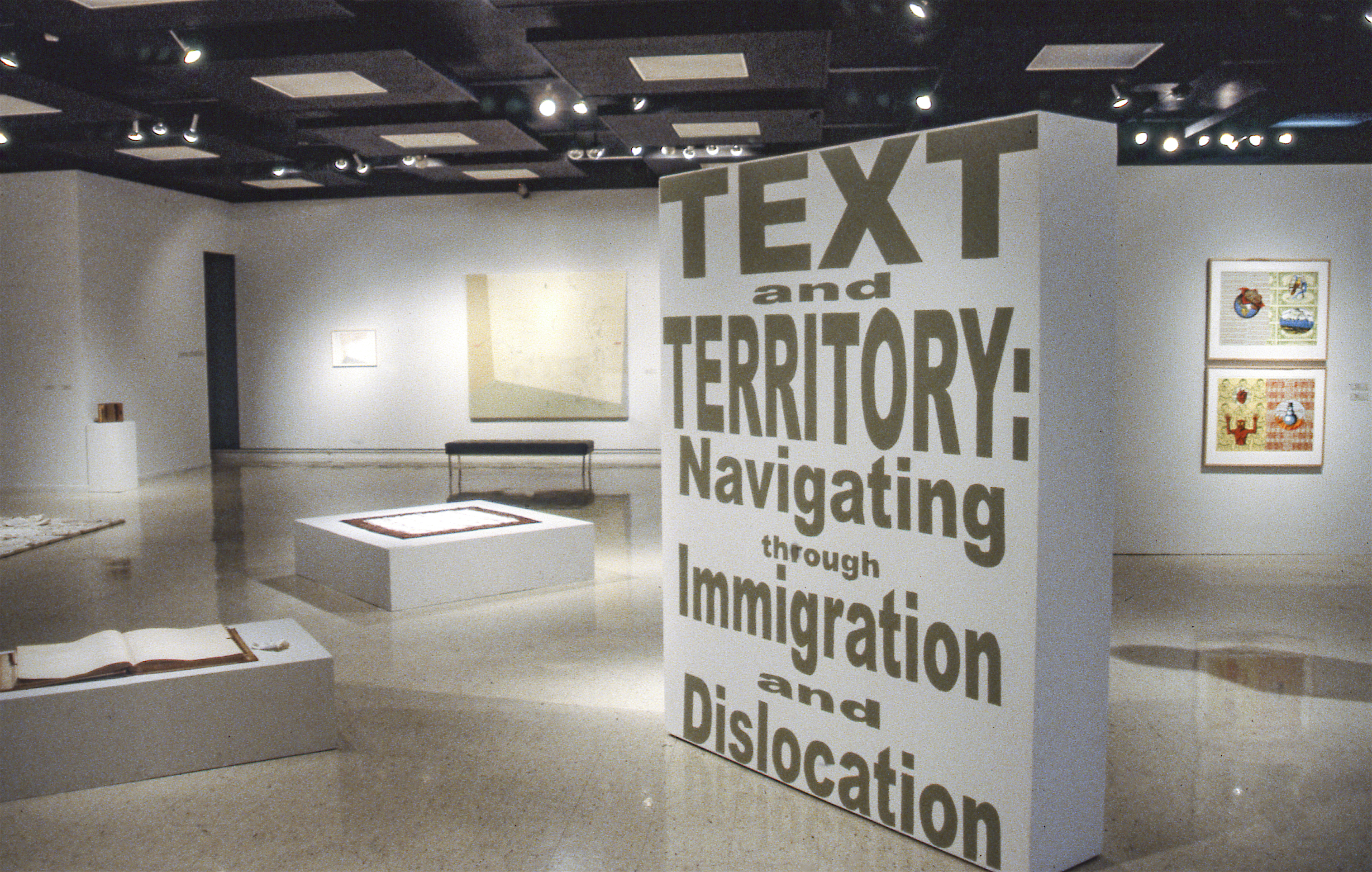
Text and Territory: Navigating through Immigration and Dislocation
October 6 - November 8, 1998
The artists in Text and Territory use various materials—law books, embroidered cloth, cooked earth, and maps—to comment on the use of language and maps in identity formation. Responding to our boundaries—ethical, social, national, or sexual, the exhibition probes the stability of texts and territories, and their power to (dis)place us.
The artists in Text and Territory approach the question of cultural identity from different backgrounds and locations. Joe Nicastri and Sherri Tan utilize law books, canonical texts, and plot maps to create sculptures that are as beautiful as they are troubling. Dan Rose suggests in his wall sculptures that the boundaries between peoples are as constructed and dislocating as the illusory boundaries between nature and culture. Whether incorporating territorial lines drawn on a map or invisible lines depicting the difference between bodies, David Wojnarowicz vividly undermines the boundaries of identity. Vibrating between image and information, Julie Mehretu’s work elaborate the patterns of migration in images that reveal the movement of people and the passage of time through layers of drawing. Indira Freitas Johnson articulates the sensation of hybridity by combining the traditional needlecraft of India with American sweepstakes entries. Pure Chutney, a film co-directed by Amitava Kumar, articulates the diversity and hybridity of Trinidadian-Indian culture with a sophisticated awareness of the difference between individuals and the community in which those individuals participate. A collaboration between photographer Ruth Ward and writer Fatema Mernissi, Vanishing Orient: Papa’s Harem is Shifting to Mama’s Civil Society reveals the power and, conversely, the difficulties of women in the Muslim world.
Exhibition Documentation
Events & Programming
Exhibition reception
October 6
7:00 p.m.
